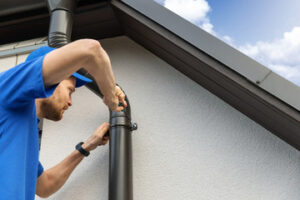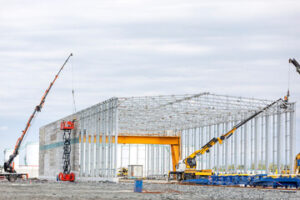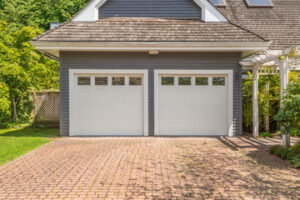Roofers Helena MT are no longer just workers who install shingles. They have evolved into skilled professionals who understand structure, safety, and sustainability. The craft now blends tradition with innovation as buildings adapt to climate shifts and design trends. Every rooftop has become an opportunity to enhance protection, efficiency, and visual appeal.

The rise of energy-conscious construction has placed new demands on roofers. They are now expected to install systems that regulate indoor temperatures and reduce power usage. Reflective materials, solar integrations, and insulating layers are part of their daily tasks. This transformation requires both technical expertise and ongoing training.
Modern roofers need a strong grasp of environmental impact. Material choices are weighed not only for durability but for recyclability and ecological footprint. They must assess how a roof system handles water runoff and heat reflection. These details contribute to the building’s overall sustainability rating.
Roofing work increasingly relies on advanced tools and digital planning. Drones help survey complex rooflines without putting workers at risk. Software creates precise models for slope, ventilation, and material estimation. This reduces waste and minimizes project delays.
Storm resilience is now a key element of every roofing plan. Regions that face intense weather events require systems that hold under stress. Roofers use specialized fasteners, membranes, and techniques to improve durability. Preparation and execution are critical to the outcome.
Communication skills are now essential for roofing professionals. Clients want to understand their options, timelines, and budget risks. Roofers must clearly explain technical details in simple terms. This builds trust and helps projects move forward smoothly.
Restoration work is just as vital as new construction. Older homes need skilled roofers to repair historic designs while upgrading their performance. This balance between preservation and function demands experience and precision. A mistake can affect both appearance and structure.
Flat roofs bring a different set of challenges and innovations. Drainage systems must be flawless to prevent pooling and leaks. Rooftop gardens or equipment require additional support and planning. Roofers adapt designs to suit these unique layouts.
Safety on the job is a non-negotiable priority. Roofers face risks that include falls, weather exposure, and equipment mishandling. Strict protocols, harness systems, and regular training reduce incidents. A culture of safety ensures workers can focus on quality.
Roofers also contribute to indoor comfort and health. Proper ventilation and insulation prevent mold, regulate air flow, and support better air quality. Mistakes in these areas lead to long-term damage and discomfort. This is why roofing is more than just surface work.
In commercial projects, roofers often work alongside architects and engineers. Their insights ensure that roofing plans align with structural and energy goals. Early collaboration saves costs and enhances building performance. Their role in the design phase is now more prominent than ever.
Repair services have expanded to meet emergency needs. After storms or accidents, roofers must act quickly to prevent further damage. Temporary solutions often lead to permanent replacements. Their response time can save homes from worsening conditions.
Training programs for roofers are becoming more specialized. Certifications focus on modern systems like green roofs, solar panels, and reflective coatings. This helps professionals stay competitive in a fast-evolving industry. The days of learning only through experience are fading.
Roofers must understand the chemistry of their materials. Temperature, humidity, and UV exposure all affect how products perform. They must choose combinations that match the building’s location and purpose. This attention to detail improves lifespan and cost efficiency.
Customer expectations continue to rise as information becomes easier to access. Homeowners research roofing options and compare contractor reviews before making a decision. Roofers must deliver quality, transparency, and reliability to stay in demand. Reputation now spreads faster than ever.
Seasonal shifts affect both project schedules and material behavior. Roofers plan around weather patterns to ensure proper installation. Cold snaps, heat waves, or heavy rain can all delay work or ruin materials. Flexibility and planning are essential for success.
Roofing now intersects with environmental design and real estate value. A well-installed, energy-efficient roof increases property appeal and resale potential. Buyers look for signs of recent upgrades and low maintenance. Roofers indirectly influence how properties are perceived in the market.
Innovations in roofing include smart materials that respond to environmental changes. Some systems adjust insulation properties based on outside temperature. Others include embedded sensors that track damage or leaks. Roofers trained in these technologies offer cutting-edge solutions.
Working at heights builds resilience and focus. Every movement must be calculated for balance and efficiency. Roofers develop both physical endurance and mental discipline. These traits shape a workforce that is alert and adaptable.
Suburban and rural roofing projects often differ in scale and design. Rural homes may need stronger weatherproofing, while suburban neighborhoods focus on uniform appeal. Roofers tailor their methods and materials to each context. There is no one-size-fits-all approach.
Post-installation care is a growing part of roofing services. Clients are educated on maintenance routines and signs of wear. Roofers often schedule annual inspections to prevent large repairs. This ongoing relationship ensures the roof performs at its best.
Roofers are also affected by shifts in material supply and costs. They must adapt to shortages, price changes, and evolving building codes. Staying informed helps them guide clients toward smart choices. Resource management has become a core skill in the trade.
Green construction practices have introduced new roof types and roles. Living roofs require plant-friendly waterproofing and drainage layers. Roofers collaborate with horticultural experts to achieve the final design. These systems provide beauty, insulation, and stormwater control.
Energy efficiency is not just about insulation anymore. Roof coatings can reflect solar radiation and reduce cooling needs. Roofers apply these layers with precision for maximum effect. The result is a structure that breathes and performs better year-round.
Team dynamics on roofing crews impact speed and safety. Every person has a specific role and rhythm on the job. Coordination ensures materials are used correctly and timelines are met. A skilled team can complete complex projects with minimal disruption.
Building codes are updated frequently, especially in response to climate change. Roofers must stay current to ensure legal compliance. Failure to meet code can void warranties or delay approvals. Continued education keeps them ahead of shifting regulations.
Recycling and waste reduction are now part of roofing project planning. Old shingles, metals, and membranes are sorted for reuse or repurposing. Roofers contribute to waste diversion efforts that protect the environment. Efficiency starts with what’s removed, not just what’s installed.
Digital marketing has become essential for independent roofing contractors. A strong online presence, project galleries, and client feedback draw new business. Roofers now balance hands-on work with digital branding. This dual skillset shapes the future of independent tradespeople.
Roof styles continue to evolve, blending global inspiration with local needs. Traditional designs now include modern touches like skylights and solar compatibility. Roofers must balance structure with style in every build. Aesthetic understanding adds value to their technical skills.
Some roofers now consult on storm preparedness and insurance documentation. They help homeowners assess damage and file accurate claims. Their detailed reports support fair evaluations and faster payouts. This advisory role enhances their position in the industry.
Apprenticeship programs are gaining traction again. These structured paths provide practical skills with mentorship and certification. Roofers trained this way often show higher retention and job satisfaction. The craft gains strength through guided hands-on learning.
Roofing impacts sound insulation as well. Proper layering reduces external noise and creates quieter indoor spaces. Roofers account for this when working near airports, highways, or dense neighborhoods. Comfort goes beyond protection from weather.
Despite advances, the physical demands of roofing remain high. Workers must manage fatigue, hydration, and repetitive motion. Companies that prioritize health see better performance and retention. Roofing requires bodies and minds that are well cared for.
Women are entering the roofing profession in greater numbers. They bring fresh perspectives and contribute to inclusive work environments. Training programs now encourage diversity at all levels. The trade becomes stronger with broader participation.
As cities grow vertically, roofers must work in tighter, taller spaces. Equipment and safety strategies must adjust to meet these challenges. High-rise work demands special certification and confidence. Roofers who adapt gain access to premium urban projects.
The role of roofers will continue to shift with technology and climate needs. Their work forms the outer shield of homes, businesses, and public buildings. By blending craftsmanship with innovation, they shape how structures endure and perform. Their value grows as the demands on buildings evolve.




